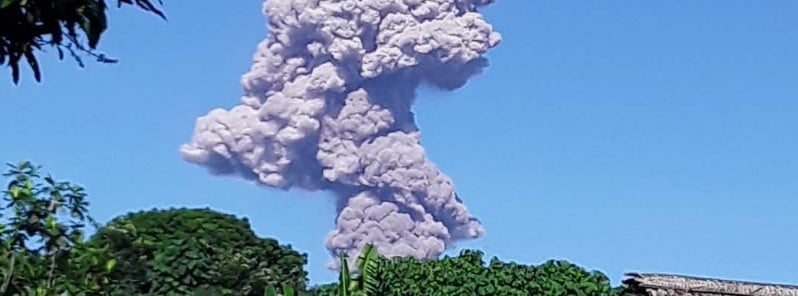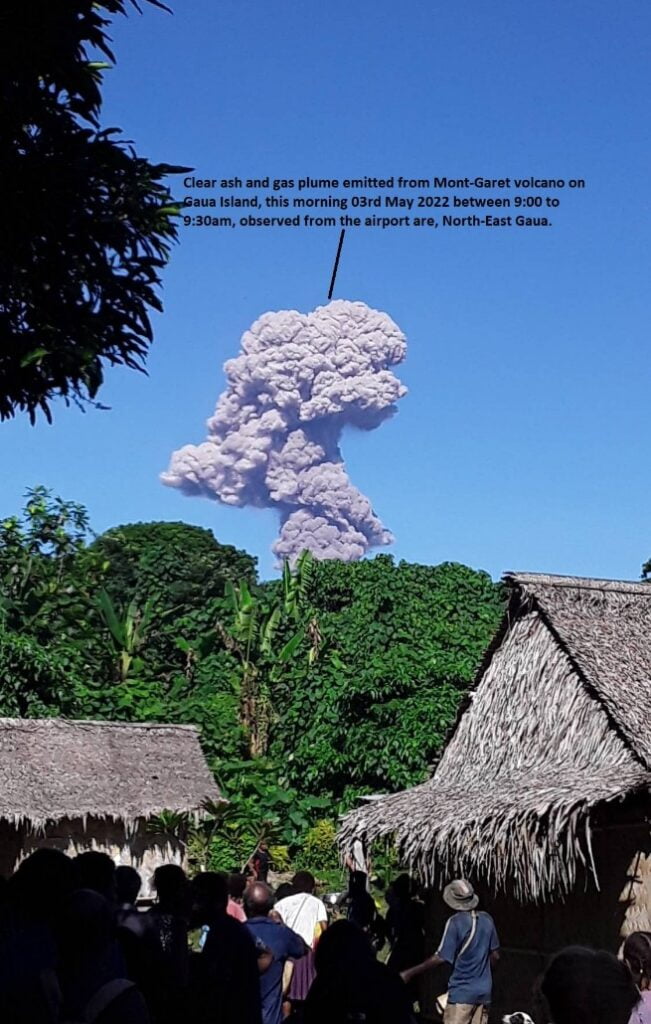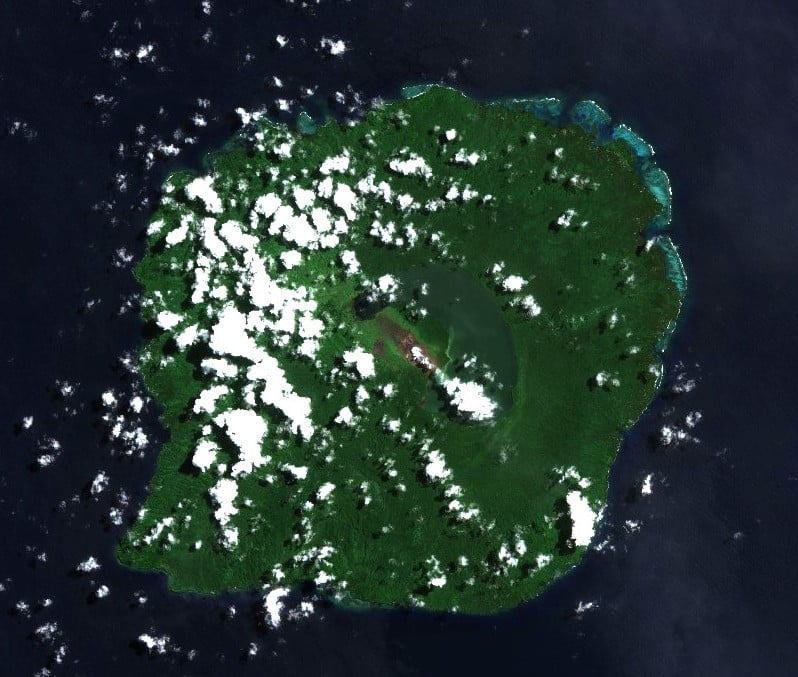Significant ash plume after strong explosion at Gaua volcano, Vanuatu

A strong heavy sound of an explosion was heard by people living near Gaua volcano, Vanuatu on May 2, 2022, followed by a significant thick ash plume. The volcanic Alert Level remains at Level 2 – high level of the major unrest state. The last known eruption of this volcano took place in 2011 (VEI 1).
The Gaua volcano activity has now increased to the high level of the major unrest state, consistent with the Volcanic Alert Level 2, the Vanuatu Meteorology and Geohazards Department reports.1
New analyses suggest that this volcano activity is likely to continue at this same level of major unrest (Level 2) or increase to the minor eruption state (Level 3). Volcanic hazards remain on the Gaua volcanic cone (e.g. volcanic gases). The danger zone for life safety is limited to the volcanic cone.
Ground observations and satellite data confirmed that the current activity consists of an ongoing volcanic steam cloud that may contain volcanic gases.
Between 09:00 and 09:30 LT on May 3 (22:00 – 22:30 UTC on May 2), a significant thick ash plume emitted from the vent after a strong heavy sound of an explosion was heard by villagers, especially in Naveto village in the northeastern Gaua.
Visitors will continue to smell volcanic gas while approaching the volcanic cone, VMGD said.

Advice to all tourism agencies, local authorities, people of Gaua, and the general public regarding this current activity, the danger area remains at the volcanic cone. The level of risk for visitors accessing areas around the Gaua volcano is high.
Villages exposed to wind direction may expect volcanic gases and/or ash falls impact and other volcanic risks could occur at any time in such a major unrest state.

Geological summary
The roughly 20 km (12.4 miles) diameter Gaua Island, also known as Santa Maria, consists of a basaltic-to-andesitic stratovolcano with an 6 x 9 km (3.7 – 5.6 miles) wide summit caldera.
Small parasitic vents near the caldera rim fed Pleistocene lava flows that reached the coast on several sides of the island; several littoral cones were formed where these lava flows reached the sea.
Quiet collapse that formed the roughly 700 m (2 300 feet) deep caldera was followed by extensive ash eruptions.
Construction of the historically active cone of Mount Garat (Gharat) and other small cinder cones in the SW part of the caldera has left a crescent-shaped caldera lake.
The symmetrical, flat-topped Mount Garat cone is topped by three pit craters. The onset of eruptive activity from a vent high on the SE flank in 1962 ended a long period of dormancy.2
References:
1 GAUA VOLCANO ALERT BULLETIN N05 – issued by the Vanuatu Meteorology and Geohazards Department on May 3, 2022
2 Gaua – Geological summary – GVP
Featured image credit: VMGD

Commenting rules and guidelines
We value the thoughts and opinions of our readers and welcome healthy discussions on our website. In order to maintain a respectful and positive community, we ask that all commenters follow these rules:
We reserve the right to remove any comments that violate these rules. By commenting on our website, you agree to abide by these guidelines. Thank you for helping to create a positive and welcoming environment for all.